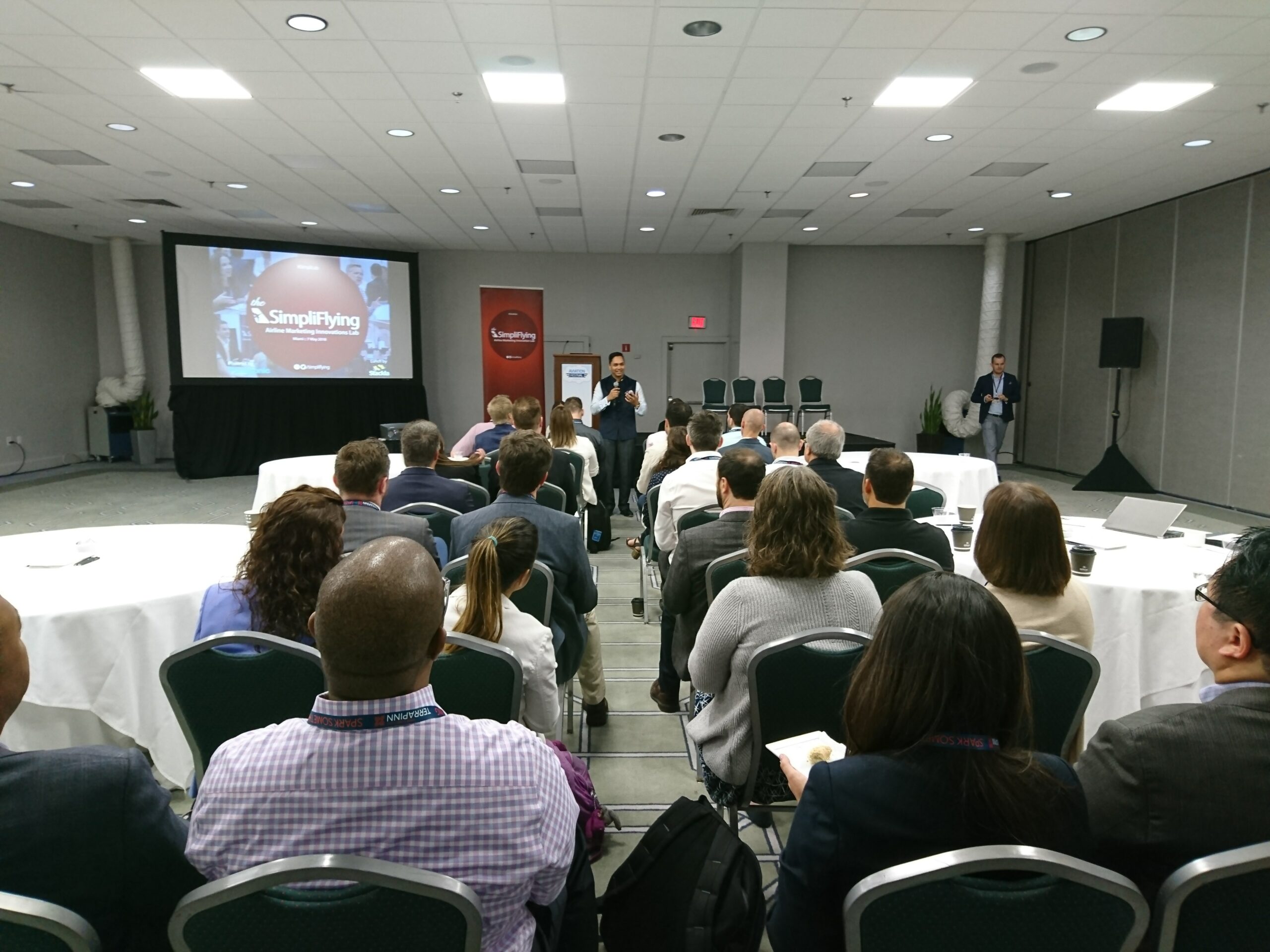A plane crash, live music, acting, laughing, sharing and some of the best airline marketers in the Americas, this was the recipe for one of the most successful Labs we have ever had. If you were there with us you know what we are talking about. If you missed it or would like to refresh your memory, you are in the right place – this article is a recap. (For the pictures click here)
Of course, we started the day with a little surprise, making all of our attendees evacuate an imaginary plane that had just crashed – but soon we started getting down to business. Dave Carroll opened the day with the story of United breaks guitars and how it changed airline’s attitudes to social customer service.
Getting serenaded by @DaveCarroll at #SimpliLab. Ironically @united didn’t just break his guitar, they lost his luggage on the way to this event. pic.twitter.com/xNh5RMRuhx
— Christina Polaski (@cpizzella) May 7, 2018
After that, we followed with 3 sets of roundtables and panels on command centres, integration of bots and humans, and digital passenger experience.
Command centres
In the first roundtable of the day, we saw many airlines wishing they had a command centre or at least a system that would allow them to integrate the many different elements that make up their existing customer service and crisis management systems. The most common trouble areas were gaps between customer service and marketing or between agencies/call centres and the airline’s home team.
In both of these cases, the challenges seemed to be both structural and procedural. Structural because in most cases the airline’s internal organization dates back to an age where customer service was very different and the speed of communication much slower. Procedural because a lot of the processes were also designed for a different world and, despite the occasional update, have never been fully redesigned.
At the same time, there was an interesting debate on what to do after customer service problems are detected. Here some attendees defended that agents should be trained to escalate cases efficiently while others thought that agents should be trained to solve as many issues as possible without the need for escalation.
These discussions reflected a lot of what we have seen in our consulting work, especially during assessments. To find out more about the topic we recommend reading our command centres article.
Integrating bots and humans
Our second topic of the day was inspired by a question that – in different forms – has been asked to us by many airlines over the past year and discussed by our consultants in a recent article. On one hand, bots bring great efficiencies and cost reductions – especially in digital customer service – but on the other, they are not yet very good at dealing with humans both on the airline side and on the customer side.
There were also many ethical considerations with discussions on whether the users should be informed that they are talking to a robot – even if they can’t tell the difference – and on how the new bots should be tested. Moreover, there were discussions on how handovers to human customer service agents could be managed and when/if the client should be informed.
On a more practical note, the testing of bots became an interesting discussion point with most attendees agreeing that small-scale tests were ideal but disagreeing on where the tests should be done. One of the most controversial options proved to be the testing on frequent flyers. Some airlines argued this would give them a better service and make them more loyal, others worried about the risk of upsetting such a valuable audience.
On the commercial front, an interesting point was raised around value, with discussions taking place on whether a bot could really add value to the customer during the sales process.
Digital passenger experience
Our friends at Panasonic were the subject matter experts for our digital passenger experience roundtables and helped us bring out some interesting discussions points.
The phrase of the day was perhaps “build something you can deliver” and encapsulated many of the attendees’ concerns. It became clear that airlines often think too big or overpromise while failing to deliver a consistent experience. At the same time, it became clear that many airlines aren’t using what they already have to the fullest – especially in terms of IFEs and connectivity.
The conversations on the tables often veered towards practical concerns such as where to start. Here most airlines agreed that one of the biggest mistakes was not giving enough information to the crews and frontline staff. It was often mentioned that crews and airport staff struggled during delays and cancellations because passengers had more updated and reliable information.
What’s next?
In the breaks and after the lab the conversations continued and many were happy to discover that they were not alone and other people in other airlines shared the same problems. In this article we have only scratched the surface, but if you’d like to be part of these conversations you can apply to participate in our London lab.
It will take place on the 4th of September and as always will be attended by a selected group of the best airline marketers in the world.
